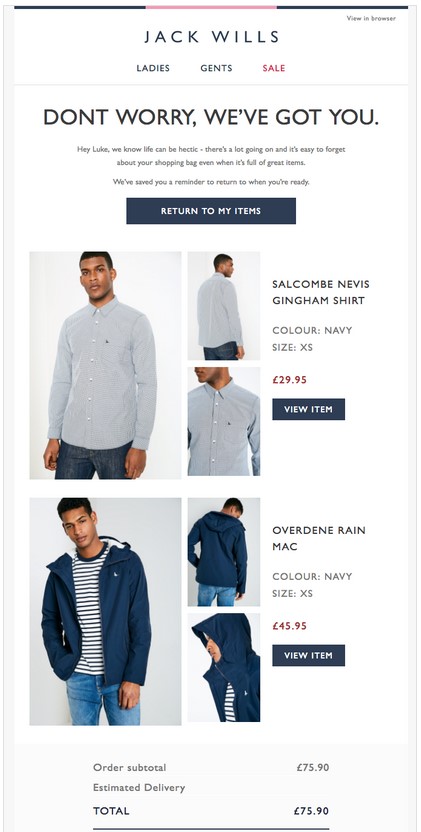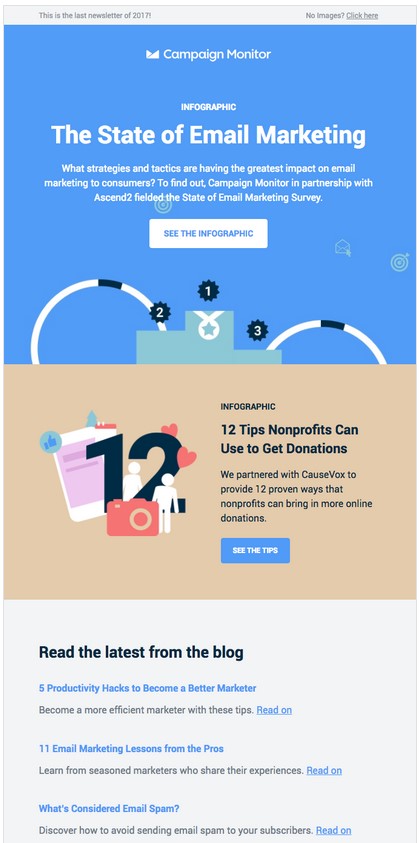Are your email campaigns sluggish lately?
Does your marketing toolbox need a powerful tool to improve click rates and conversions? Have you considered email lead scoring but need a little primer on the best way to use it?
Email lead scoring is a unique way to rank your subscribers based on the information you know about them and their behaviors. But how do you do it the right way?
Where can you get more information about using lead scoring to your advantage, and where do you even begin?
Read on to discover ways you can use email lead scoring to improve conversions, how to set up your strategy, and best practices for using this effective marketing tool.
How to set up an email lead scoring system
Email lead scoring is a powerful way to improve your click rates and conversions. Once you do the research and set up a scoring system, email campaigns work for themselves.
You can make an email lead scoring system as complex or simple as you want—it doesn’t have to be some complicated algorithm. It can be as simple as assigning arbitrary numbers to actions and attributes about your customers.
Here’s an example of a simple email lead scoring system:
- Takes an action on your email—2 points
- Multiple visits to email or website—2 points
- Takes an action on your website—5 points
- Downloads an eBook or guide—5 points
- Takes an action in your shop—10 points
- Abandons cart at checkout—20 points
You can set up automated emails that trigger when someone reaches a certain lead score. For example, let’s say someone downloads an ebook from your website and adds your newest course to their cart, but then abandons checkout.
This person scores 40 points—you can send an email when they hit 30 points that invites them back to your shop with a discount code or free shipping offer. This is just one of many ways lead scoring can help improve your conversion rates.
Get cart abandoners back with Campaign Monitor Commerce.
If your organization has too many leads for a simple system, you can put together something more comprehensive that has weighted attributes.
An example of a weighted attribute would be weighting the scores of people who take actions on your website versus people who take actions on your emails.
5 ways you can use email lead scoring to improve conversions
We’ve told you how to set up an email lead scoring system and how it improves conversions, but how exactly do you use your email data to set up a lead scoring system?
Let’s look at some of the ways you can score your data:
1. Scoring by email engagement
How a subscriber engages with your emails is an indicator of their interest in your company (and your products or services). This is valuable data to use in email lead scoring, and valuable data to predict your conversions accurately. In fact, it might be some of your most valuable data.
You can score based on opens, click-throughs, and conversions, or even score on where someone clicks on your email. Did they click your CTA or some other link in your email? What was their next action?
2. Scoring by website engagement
It’s one thing for subscribers of your email campaigns to read your emails, but it’s a different thing entirely for them to interact with your website. If your emails are working, your subscribers should find something in your email to guide them to your website.
Score websites differently than emails where it makes sense. You may want higher scores for different levels of website engagement, like abandoned carts or eBook downloads, for example.
Source: Really Good Emails
3. Scoring by demographics
Demographics—age, gender, orientation, location, ethnicity, etc.—can be an effective attribute to score on, if you know your target audience well. Take a look at the demographics of your usual buyer, then score your leads based on the demographics that spend the most on your products and services.
Learn how millennials and Gen Z compare in our guide.
Using demographics is a great way to improve your targeted email campaigns, in general. Location-based email marketing is effective for companies that have local appeal, and it happens to be one of the more commonly used targeting methods.
Source: Really Good Emails
4. Scoring by channel
Did your customers get on your email list from a download you offered? Did you get their email address when they started an abandoned checkout process? Maybe they got to your list from Facebook? All of these can be indicators of where a person is in the buying process—thus, they’re prime attributes for scoring.
The more a subscriber interacts with your website, the more likely they are to convert. Scoring based on how they interact is a great way to amplify your scoring system’s value. Someone that got to your website from a shopping cart should have a higher score than someone who got there through social media.
5. Scoring by industry
B2B email marketing can benefit from email lead scoring too. Does your company have an industry that routinely spends more than others?
Is there an industry your company wants to get into, but you aren’t quite there yet? Weight their industry higher than others to trigger targeted emails for their industry.
Scoring by industry allows you to rank the most lucrative industries higher than industries that may not spend as much with your organization. You can then send emails targeted at that particular industry, highlighting your industry expertise.
Source: Really Good Emails
Email lead scoring best practices
Now here’s the fun part: taking all of that data and putting it into practice.
You’ve set up a scoring system and your team decided score subscribers based on their email and website engagements, plus the channel through which they got to your site. Now what?
Here’s how you can use that data to maximize conversion rates:
- Set up a proprietary scoring system: You can start with our example but create an email lead scoring system based on your audience. What are the key attributes of your subscribers? How do they typically interact with your emails, and what behavior are you trying to drive with them?
- Use list segmentation to further drill down into your audience: List segmentation, which you should already be using, is an equally powerful tool for email marketing. Have lists that routinely outperform others? Rank those people higher in your scoring system.
- Work with an agency that knows lead scoring: Feeling a little overwhelmed by the prospect of putting together your own scoring system? Use an email marketing platform that understands the ins and outs of lead scoring. All you do is provide the data and parameters, then reap the rewards.
- A/B testing can help solidify your scoring system: It’s highly unlikely that you’ll knock it out of the park on your first round of email lead scoring. Don’t worry—use A/B testing to monitor the results of your efforts and see how people with different scores respond to your emails.
- Combine lead scoring with other email best practices: Don’t sleep on other email best practices like testing your subject lines, creating stunning email design, and crafting language that’s engaging. These email best practices serve to amplify the efforts of your email lead scoring system.
A comprehensive email marketing system is critical to higher ROI. These best practices will guide you toward an email lead scoring system that works for your company.
Wrap up
Don’t let all of this information overwhelm you; setting up an email lead scoring system isn’t hard. It just takes some diligence and patience. Log your results in a testing log, so you can track your changes and improvements.
Here are three important things to keep in mind after reading this guide:
- Create an email lead scoring system based on your audience—you know your audience better than anyone, so use what you know about them to start building your scoring system.
- Real rewards don’t happen overnight—between building your system and sending A/B testing emails, seeing benefits from lead scoring will take some time.
- Use email best practices to exponentially increase the value of your scoring system—best practices are a cornerstone to effective email campaigns.
We’re positive you can put together a practical lead scoring system using these best practices and tips for building one.
Want to know more about how list segmentation can drive your email lead scoring system? Contact Campaign Monitor to learn more about their list segmentation features.








